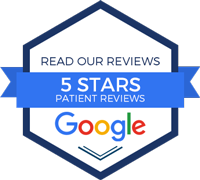Low Back issues can be a “Pain”.
Why isn’t my lower back pain going away?
How do I treat it?
These are likely some thoughts you have had if you have ever dealt with a chronic low back issue.
What may seem a minor issue at the time, can sometimes snowball into months or even years of stiffness, pain, or discomfort. The inability to sit, or walk, or bend, or lift, or exercise, can be extremely frustrating for most.
So why is an injury of this nature such a complicated condition to deal with?
If you look at the anatomy of the lower back (you can google some pictures online), you will see that the lower back is a very complex structure.
We have a spine, comprised of individual vertebra, which runs from the lower back all the way up to the neck. We have our hips/pelvis/sacrum/tailbone,
We have discs, which are the cushions between the bones of the spine. We have nerves that run from the spine and into the legs (which can cause sciatic and other sensations in the leg).
And then we have numerous ligaments, tendons, and muscles that not only support the lower back, but they connect to the butt, the thighs, hamstrings, and lower legs.
As you can see, not only does the lower back area become affected with injury, but the body is built in a way, that a problem in the lower back can affect the rest of the body.
Remember that song, “the hip bone is connected to the knee bone, the knee bone is connected to the ankle bone….”?
So what can you do about it? Well, there are a lot of options.
Rest
First, rest is usually best. That saying “no pain, no gain”? It doesn’t apply when you are in ‘real pain’. If your body isn’t resting, your body isn’t healing. You may be thinking, “well, I need to exercise because it feels good.” Or, “if only I can lose some weight, I know my back will get better”. These statements are incorrect. The more you exert your lower back, the worse it is going to get. It is that simple. If you are resting and it is still NOT getting better, then you need to treat it.
Stretches
Stretches aren’t fun. Nobody really enjoys them, do they? Don’t worry, you are not alone if you feel this way. If you don’t enjoy stretching, what about yoga? Yoga is a great for improved flexibility and balance. And, it is great for your mental and emotional well-being too! Regardless, stretches do relax tightened muscles. And very often, they can help alleviate pressure off your lower back.
Some areas to stretch? Your lower back, your gluts, your piriformis muscles, your psoas muscles, your hamstrings, your quadriceps, your calves… stretching any of these muscles can be extremely helpful.
Not sure what to stretch? Feel free to ask one of us. Our Therapists even do virtual calls with patients to go over stretching (in case you aren’t able to make it to us in person).
Painkillers
Though not ideal, we always say do what you need to do to get yourself out of pain. Just don’t become reliant on medication. Sometimes it gives you a false sense of security, and you can damage your lower back more if you “think” you feel better. And as you know, overuse of meds can affect your general health. So be mindful when using meds but use them if you need to.
Treatment – and what kind?
There are so many options that it can understandably get confusing.
Chiropractic – great for stabilizing and rebalancing the spine and pelvis/hips. It also decrease pressure on the nerves that exit the spine. From a foundation perspective, chiropractic is extremely important and highly recommended no matter what else you do.
Massage – Great for relaxing, stretching tight muscles around the spine and pelvis. It can simply feel great afterwards.
Athletic Therapy or Physiotherapy – Hands on treatment to help massage, stretch, and strengthen the lower back and leg muscles.
Spinal Decompression – a computerized traction machine (think of being on a “modern day rack”). This pulls on the discs and spine and stretches it out. Great for disc problems and helps alleviate pressure in the lower back.
_________________
So hopefully the above is helpful for you. As mentioned, low back pain is not always an easy condition to deal with. But you can have faith that we have the experience and expertise to help you need us.
If you do have any questions in the meantime, do not hesitate to reach out. If you do feel you need care and don’t know what to try, give us a call and we will book a consultation for you. From one meeting, we can advise to you as to what treatment could work best.
Yours in health,
Dr. Arora & The Arora Family Chiropractic Team

